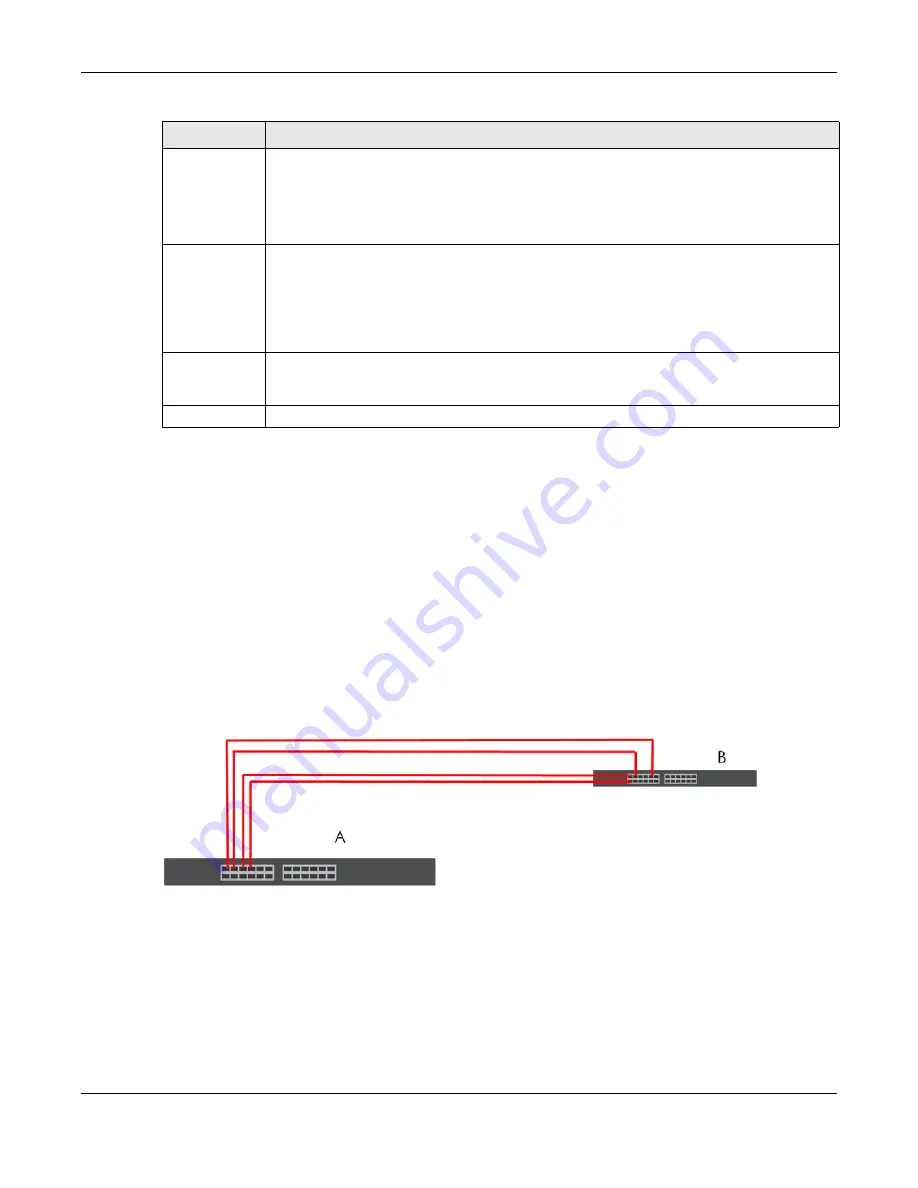
Chapter 34 Link Aggregation
XGS2220 Series User’s Guide
224
34.5 Technical Reference
This section provides technical background information on the topics discussed in this chapter.
34.5.1 Static Trunking Example
This example shows you how to create a static port trunk group for ports 2
–
5.
1
Make your physical connections
– make sure that the ports that you want to belong to the trunk group
are connected to the same destination. The following figure shows ports 2
–
5 on switch
A
connected to
switch
B
.
Figure 160
Trunking Example
–
Physical Connections
2
Configure static trunking
–
Click
PORT
>
Link Aggregation
>
Link Aggregation Setting
. In this screen
activate trunk group
T1
, select the traffic distribution algorithm used by this group and select the ports
that should belong to this group as shown in the figure below. Click
Apply
when you are done.
*
Settings in this row apply to all ports.
Use this row only if you want to make some settings the same for all ports. Use this row first to set
the common settings and then make adjustments on a port-by-port basis.
Note: Changes in this row are copied to all the ports as soon as you make them.
LACP Timeout
Timeout is the time interval between the individual port exchanges of LACP packets in order to
check that the peer port in the trunk group is still up. If a port does not respond after three tries,
then it is deemed to be “down” and is removed from the trunk. Set a short timeout (1 second) for
busy trunked links to ensure that disabled ports are removed from the trunk group as soon as
possible.
Select either 1 second or 30 seconds.
Apply
Click
Apply
to save your changes to the Switch’s run-time memory. The Switch loses these
changes if it is turned off or loses power, so use the
Save
link on the top navigation panel to save
your changes to the non-volatile memory when you are done configuring.
Cancel
Click
Cancel
to begin configuring this screen afresh.
Table 106 PORT > Link Aggregation > Link Aggregation Control Protocol (continued)
LABEL
DESCRIPTION






























